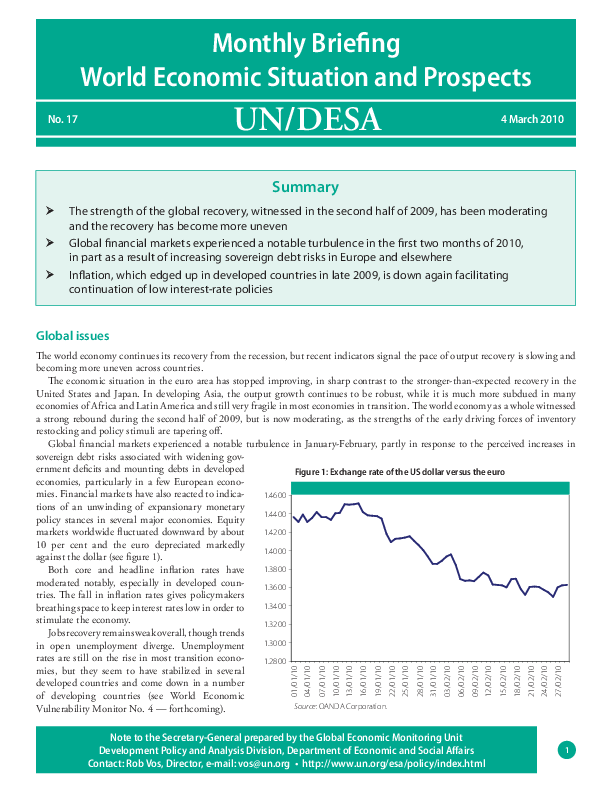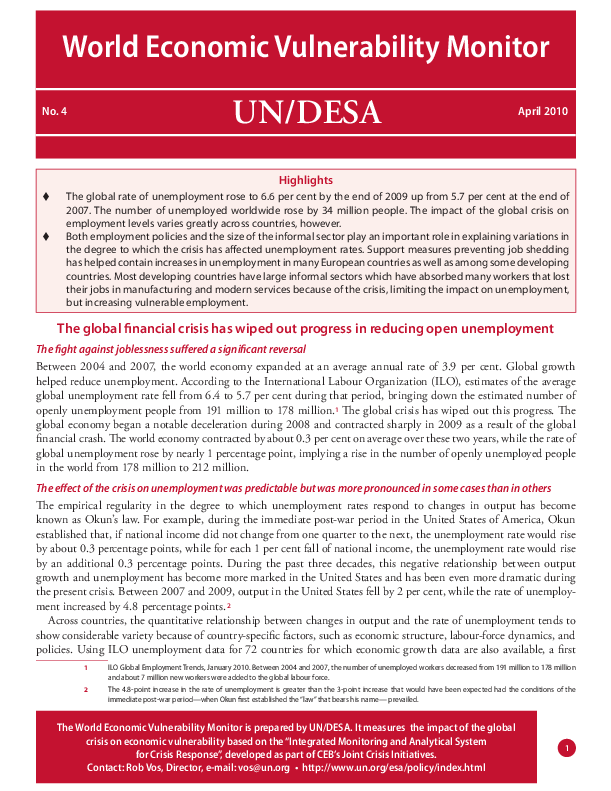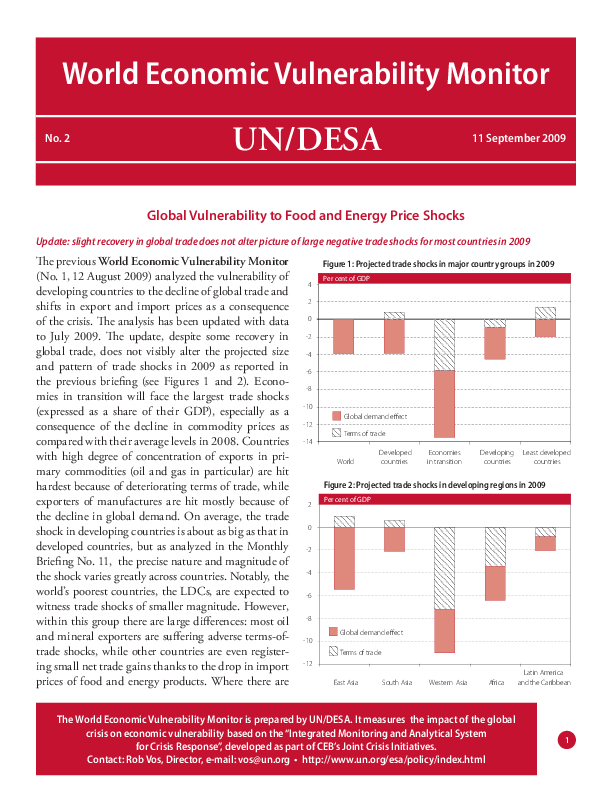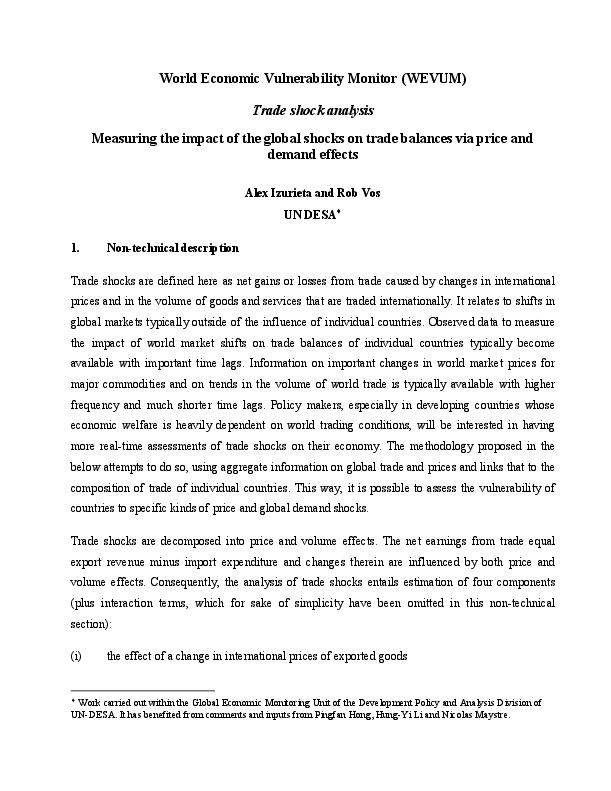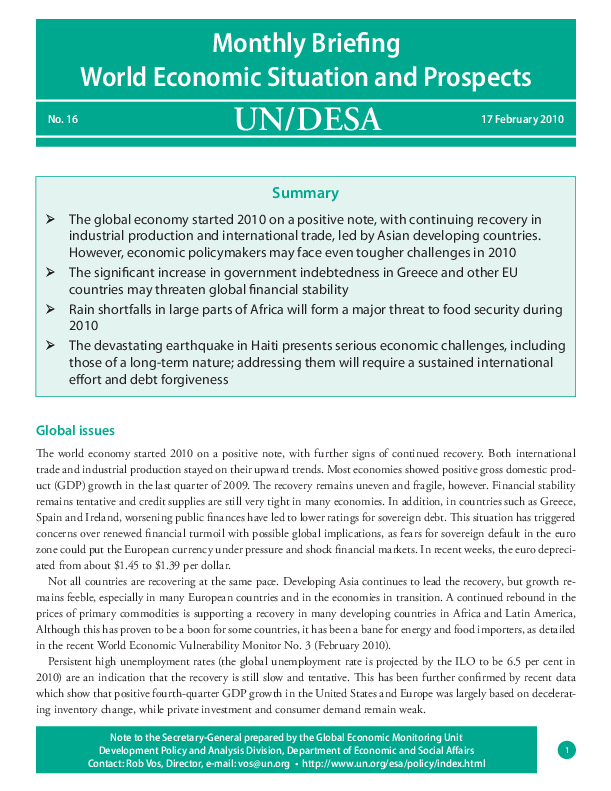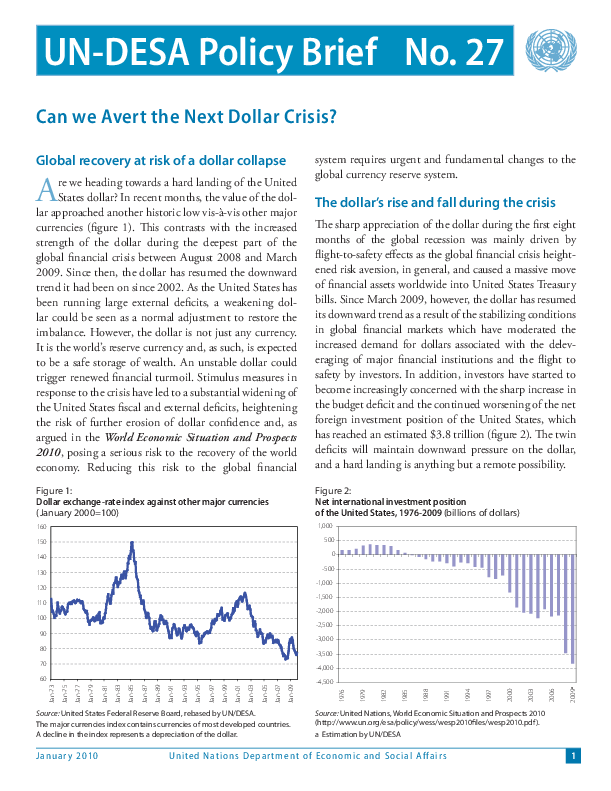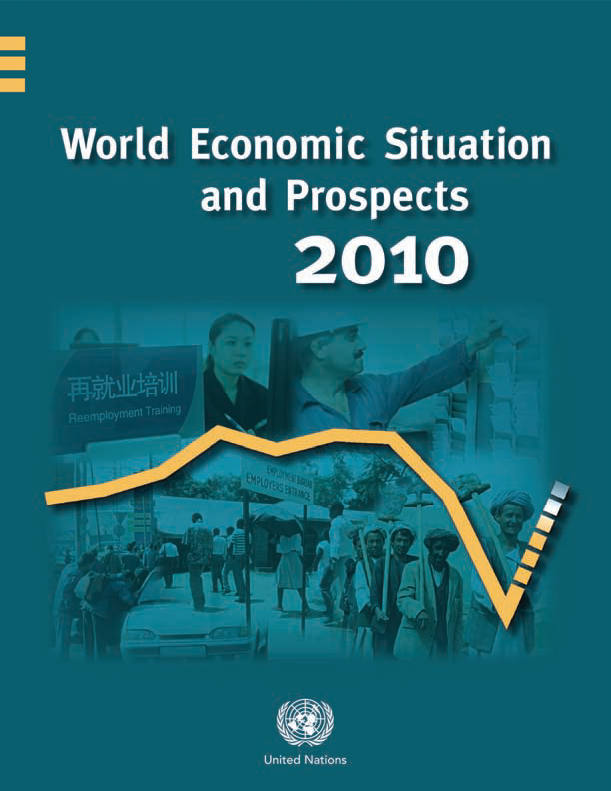Publications
Displaying 31 - 39 of 39
by?Alex Julca,?Oliver Paddison and?Rob Vos?
Summary: The strength of the global recovery, witnessed in the second half of 2009, has been moderating and the recovery has become more uneven
Global financial markets experienced a notable turbulence i
Summary: The global economy started 2010 on a positive note, with continuing recovery in?industrial production and international trade, led by Asian developing countries; however, economic policy
by Matthias Kempf and Rob Vos
 Welcome to the United Nations
Welcome to the United Nations

